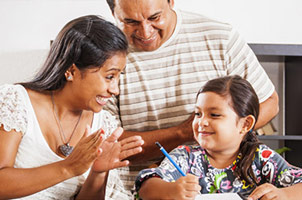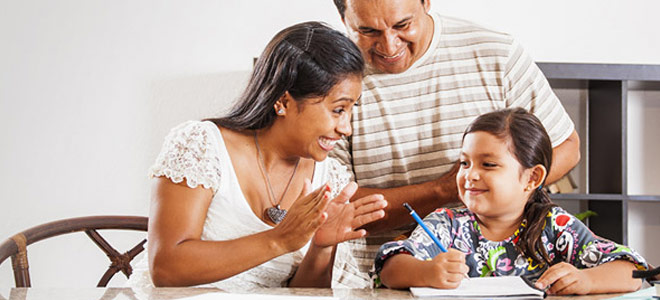Blog Categories
Search Blog
Blog Categories
Effective Strategies to Manage Negative Behaviours using Positive Reinforcement
By now most of us are firmly settled into the new year and summer is but a distant memory. Between morning routines, after-school activities, dinner time and homework, there is no shortage of opportunities for stress and conflicts. As such, there is no better time to review a couple of basic parenting strategies that may help to make life a little easier. The following information is taken from a parenting classic, “The Incredible Years: A Trouble-Shooting Guide for Parents of Children Aged 2-8 Years” by Carolyn Webster-Stratton (2005).
Let’s start off by remembering all of the things we love about our children. We often spend so much time focused on giving consequences for negative behaviour, that we don’t take the opportunity to praise our children for doing well. Catch them being good! We don’t need to wait for perfect behaviour before we offer praise. When you see your child doing something you like (even if it is small and barely noticeable), praise it! Label what it is you liked, be very specific, offer it immediately, and do it consistently. For example, “I like how you are sitting so nicely while you are eating” versus “stop running around while you eat”. So often children know what they shouldn’t be doing, but they don’t know what you want them to do instead. By praising good behaviour you increase the chances of seeing the behaviour reoccur.
Another way to reinforce positive behaviour is to reward it. Behaviour plans work if you keep them simple, stay consistent, and include the whole family in the process. To start, you want to focus on one or two behaviours that you really want to see improve. Your initial list may be long, but try to narrow it down to the most important! You want your children to be clear about what they are working on and you want them to feel successful.
Try to keep it simple to start. Once you’ve decided on the behaviours, find a way to identify them in a positive way. For example, instead of “no yelling” try “speaking calmly”, or change “no hitting” to “keeping our hands to ourselves”. Make the next step fun. Have your family sit down and decide what kind of rewards they want to work towards. Each member of the family can be working on their own behaviours and rewards. Rewards can be anything from stickers, small collectibles or nickels, to less tangible rewards such as getting to decide what is for dinner tomorrow night or getting to stay up ten minutes past normal bedtime. You always want to reward immediately after you see the behaviour, so you may want to have a two-step system. Reward immediately with a sticker, then have those stickers turn into a bigger reward with time. For example, after five stickers you can go to the dollar store for a treat. Or after ten stickers you can pick a weekend activity for the family to do together. Check out these websites for examples of behaviour charts and reward ideas:
- Charts:http://www.freeprintablebehaviorcharts.com/behaviorcharts3-10.htm
- Rewards:http://childdevelopmentinfo.com/how-to-be-a-parent/parenting/rewards/
For more information on understanding behaviours and using behavioural strategies, you can also check out these links:
- http://incredibleyears.com/parents-teachers/articles-for-parents/
- http://kidshealth.org/parent/positive/family/nine_steps.html#cat168
You can read some of our previous blog posts that address emotion regulation for further information as well. Understanding children’s emotions is a key to how we understand some of their behaviours.
- 10 Ways to Foster Healthy Emotion Regulation
- Learning More About Emotionally Attuned Parenting
- Enhancing a Young Child’s Emotional Vocabulary






